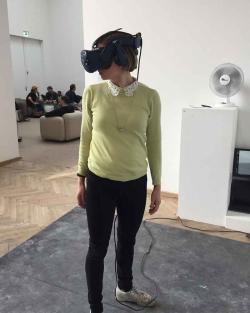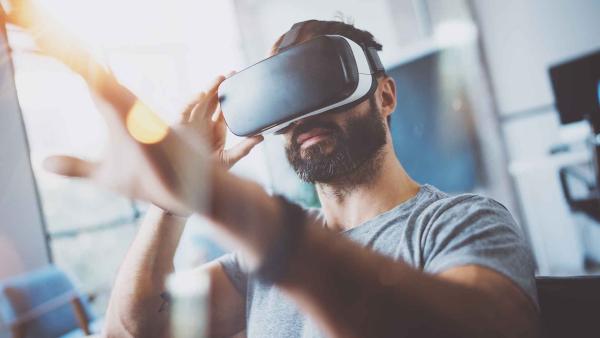For many years, the concept of the ‘single user’ has persisted within the tech industry as a way to describe the standardised, non-specific person. But with lines being blurred between the physical and digital worlds thanks to extended reality (XR), this term is starting to be seen by some as problematic.
Why? Because it doesn’t capture the diversity among users and can lead to technology experiences that are narrowly designed, said Dr Julia Scott-Stevenson, a documentary producer, curator of interactive and immersive media, and Chancellor’s Research Fellow at the University of Technology Sydney.
With technology so central to almost every aspect of our lives, the usual method of lumping users together into one single group based on an average just isn’t fit for purpose anymore. Not to mention that the way the needs of the ‘single user’ are determined poses its own set of challenges.

Dr Julia Scott-Stevenson.
“Through the early days of tech development, users probably weren’t really defined at all – it was just the standing term,” Scott-Stevenson said.
“But a lot of the time, what it actually meant was the tech designers or developers testing things on themselves.”
This made it easy for biases about who the ‘single user’ is to creep in. And while the ways these biases manifest might seem trivial to some (for example, VR headsets not accommodating head coverings or certain hair types), the message that comes across is “this is not made for me”, said Scott-Stevenson.
“We’re starting to see much clearer examples of people being excluded from not just technology, but other areas of design more broadly,” she said.
“You can start to see how a lot of these processes happened without a lot of thinking about who it is that’s going to be using these pieces of technology.”
Opening experiences through XR
Scott-Stevenson will be diving into ways the tech industry can challenge the long-standing myth of the ‘single user’ during a panel discussion at the upcoming SXSW Sydney 2023 Festival.
One reason it’s important to have this conversation now, she said, is there is a shift underway in how we view the purpose of XR technologies.
“There’s movement away from seeing technology as kind of the endpoint, to talking about how we can use technology as a tool to facilitate interaction between people,” she said.
User expectations for the types of experiences they have while using technology are also changing – they are looking for personalisation, interactivity and inclusivity.
For Scott-Stevenson, it’s been interesting to track this shift through the evolution of XR technology through the years.
Virtual reality (VR) is the most established of the technologies in this space, but it’s a solitary endeavour: you put on your headset and are closed off from the world around you.

Scott-Stevenson explores the world of virtual reality at the Copenhagen International Documentary Festival.
Then came augmented reality (AR), which overlays the digital world onto the physical world, allowing people to continue to connect with each other and the world around them using tech as a conduit.
Creating tools that incorporate diverse perspectives to help people forge these connections is an important step in realising one of the biggest benefits of XR: allowing people to experience something they might not be able to otherwise.
“The benefits of inclusive design spread so much further than designing for any one particular group; we all benefit when adaptability is actually an option,” Scott-Stevenson said.
So, what should we use instead?
If we’re trying to move away from the ‘single user’ – what should we be saying instead? According to Scott-Stevenson, we can look to different sectors and industries for some good options.
Some in creative spheres use the term ‘immersant’, though this gives off Blade Runner vibes. Scott-Stevenson said she prefers ‘participants’, as it speaks to the two-way interactivity of technology. ‘Audience’ is another one that she tends to use, though it implies a lack of interactivity.
“But I think it also implies a multitude of people, and that element is useful as well,” she said.
“So some kind of combination of participants and audiences is what I tend to go for.”
Regardless of what terminology is used, finding a new way to describe the ‘single user’ in the tech industry – something that captures the breadth and depth of who will use these tools and the myriad experiences they can facilitate – is an important step in transitioning away from a one-size-fits-all approach.
“As we’re moving away from the isolating experience of VR tech to the more shared, interactive experience, there are going to be many more opportunities to do this really poorly or do it really well,” Scott-Stevenson said.
“I hope at the panel discussion people get some practice exercising the muscle that gets them thinking about their audience. It’s a prompt to recognise the rich diversity that’s actually available to them, and to start switching from seeing it as a box-tick to something that enriches their product or project.”
Julia Scott-Stevenson will be appearing alongside other UTS academics, experts and innovators at SXSW Sydney 2023 from 15-22 October. To find out more about sessions, speakers and all the exciting activities happening around the city, click here.


